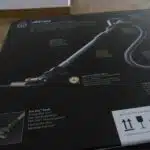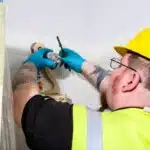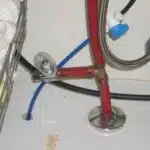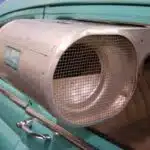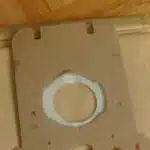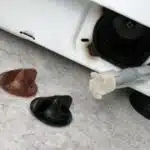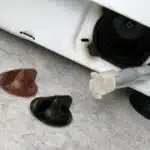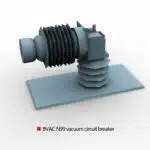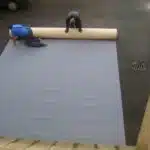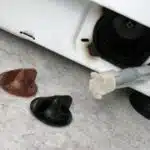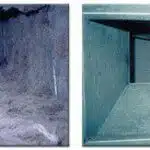As a vacuum cleaner maintenance technician, I have conducted numerous repairs and replacements on various components of the machine. One of the most frequently requested services is cleaning vacuum filters. Vacuum filters are an essential component of the vacuum cleaner, responsible for trapping dirt, dust, and debris while allowing clean air to pass through. Over time, these filters accumulate a significant amount of dirt and debris, leading to reduced suction power and potentially causing damage to the motor. In this article, I will guide you through the process of cleaning your vacuum filter efficiently.
Cleaning your vacuum filter regularly is crucial for maintaining optimal performance and prolonging the lifespan of your machine. A clogged or dirty filter can result in decreased suction power, which reduces its ability to pick up dirt and debris effectively. Additionally, a dirty filter may cause dust particles to be released back into the air during use, lowering indoor air quality levels significantly. In this article, I will provide you with step-by-step instructions on how to clean your vacuum filter safely and thoroughly to ensure that it’s operating at its best capacity. By following these simple steps, you can keep your vacuum cleaner running smoothly and maintain a clean home environment effortlessly.
Understanding The Importance Of Cleaning Your Vacuum Filter
Vacuum filters are an essential component of a vacuum cleaner, and they play an important role in maintaining the cleanliness of your home. It’s crucial to replace vacuum filters regularly to ensure that it operates efficiently. This is because vacuum filters can become clogged with dust, dirt, and debris over time, which makes the vacuum cleaner work harder to pick up dirt. When this happens, the machine’s performance is reduced, and you may not get the cleaning results you’re looking for.
Using HEPA filters in your vacuum cleaner can provide several benefits. HEPA stands for High-Efficiency Particulate Air filter, which is designed to trap small particles like pet dander, pollen, and dust mites. These microscopic particles can cause allergies or respiratory problems if they are not captured by a filter. With a HEPA filter installed in your vacuum cleaner, you can be sure that these pollutants are removed from your home’s air.
Regularly replacing your vacuum filter is essential for keeping your home’s air clean and healthy. Not only does it ensure that your vacuum cleaner operates efficiently, but it also helps to reduce indoor air pollution. The next step is determining the type of filter your vacuum has so you can choose the appropriate replacement filter.
Determining The Type Of Filter Your Vacuum Has
- Vacuum cleaners come with a variety of different types of filters, including paper, foam, cloth, and HEPA filters.
- Identifying the type of filter your vacuum has is important for proper maintenance and cleaning.
- To determine the type of filter your vacuum has, check the user manual or the manufacturer’s website for information.
- Once you have identified the type of filter your vacuum has, you can clean it according to the manufacturer’s instructions.
Types Of Filters
When it comes to vacuum filters, there are different types that you should know about. Each type has its own set of pros and cons, so it’s important to determine which one your vacuum uses. One common type is the HEPA filter, which stands for High-Efficiency Particulate Air. This filter is great for trapping small particles such as dust mites and pet dander. However, it can also be more expensive compared to other types.
Another type of filter is the foam filter, which is typically found in wet/dry vacuums. This type of filter is washable and reusable, making it a cost-effective option. However, because it’s made of foam material, it may not be as effective at filtering out fine particles compared to other filters.
Lastly, there’s the paper bag filter which is commonly used in older vacuum models. This type of filter is easy to replace and dispose of but can be less efficient in trapping smaller particles. It’s important to note that some newer models have replaced paper bag filters with more advanced options like HEPA filters.
In conclusion, understanding the different types of vacuum filters available can help you determine what kind your vacuum uses and how often you need to clean or replace it. While each type has its own advantages and disadvantages, choosing the right one depends on your specific needs and preferences when it comes to cleaning efficiency and cost-effectiveness. As a maintenance technician, my job is to ensure that your vacuum operates at its best capacity by recommending the most appropriate filter for your machine.
Identifying Your Filter
As a maintenance technician, one of the essential tasks is to identify the type of filter that your vacuum has. Different types of filters are available, and each one requires a specific cleaning or replacement procedure. Identifying your vacuum’s filter is crucial in keeping it running efficiently and prolonging its lifespan. In this subtopic, we will discuss maintenance tips on how to identify the filter type of your vacuum.
The first step in identifying your filter is to refer to the user manual that came with your vacuum. The manual should indicate the type of filter used in your machine and how often you need to clean or replace it. If you don’t have access to the manual, check the manufacturer’s website or contact their customer service for assistance.
Another way to identify your filter is by removing it from the vacuum and inspecting it closely. Most filters have markings or labels indicating their type and model number for easy identification. Take note of these details and use them as a reference when purchasing a replacement filter.
In conclusion, identifying your vacuum’s filter is vital in ensuring that it operates at its best capacity. By following these maintenance tips, you can determine what kind of filter your machine uses and how often you need to clean or replace it. As a maintenance technician, I recommend that you keep track of these details for future reference and consult with professionals if necessary.
Gathering The Necessary Supplies
Before diving into cleaning your vacuum filter, you must first gather all the necessary supplies for the job. Choosing appropriate supplies is critical to ensuring that your vacuum filter is cleaned thoroughly and effectively. Some of the essential items required for cleaning a vacuum filter include:
Vacuum cleaner manual: Before attempting to clean your vacuum filter, it’s always advisable to consult the manufacturer’s manual to ensure that you’re using the right cleaning method.
Cleaning brush: A soft-bristled brush will help remove dirt and debris from the filter without damaging it.
Warm water: Warm water helps loosen up dirt particles on the filter, making them easier to remove.
Dish soap: Dish soap is an effective cleaning agent that can help break down dirt and grime present on the filter.
Comparing different cleaning methods can also be helpful in determining which method works best for your particular vacuum model and type of filters. Some popular cleaning methods include washing with warm water and dish soap, using compressed air, or tapping gently against a hard surface to dislodge loose dirt particles.
As a vacuum cleaner maintenance technician, I highly recommend that you ensure you have all the necessary supplies before starting to clean your vacuum filter. Failure to do so may result in incomplete or ineffective cleaning, leading to reduced suction power or machine damage. In our next section, we’ll discuss how to remove the filter from your vacuum before commencing with its thorough cleaning.
Removing The Filter From Your Vacuum
The filter in your vacuum cleaner is an essential component that traps dust and debris as you clean. Over time, these particles can clog the filter, reducing its effectiveness and potentially damaging your machine. Therefore, cleaning the filter regularly is crucial to maintain optimal performance and prolong the lifespan of your vacuum.
Before cleaning the filter, it’s important to know what type of material it’s made of since different filters require different cleaning methods. For instance, foam filters are typically washable and reusable, while paper filters are disposable and need replacing after a certain amount of use. HEPA filters are made of dense materials that trap tiny particles and typically require gentle cleaning methods such as tapping or brushing.
Once you’ve identified the type of filter in your vacuum cleaner, you can proceed to remove it for cleaning. This process may vary depending on the model of your machine but usually involves releasing a latch or pressing a button to access the filter compartment. Always refer to your vacuum cleaner manual for specific instructions on how to remove the filter safely.
Next Section: Tapping the Filter to Remove Loose Debris
Tapping The Filter To Remove Loose Debris
When it comes to cleaning a vacuum filter, tapping the filter is an essential technique that you should be familiar with. This method involves removing loose debris from the filter by gently tapping it against a hard surface. The goal is to dislodge any dust particles or dirt that may have accumulated on the filter and prevent them from clogging the machine in the long run.
To tap your vacuum filter effectively, start by removing it from the device and holding it over a trash can or an outdoor area. Then, use your hand or a soft-bristled brush to gently tap the sides of the filter. You can also try hitting it against a hard surface such as a wall or floor, but be careful not to damage the filter material. Repeat this process until no more debris falls out of the filter.
While tapping is an effective way of cleaning your vacuum filter, there are some preventative measures you should consider taking to keep your machine in good condition for as long as possible. For instance, make sure you empty your vacuum’s dustbin after each use and replace filters regularly according to manufacturer’s instructions. Also, avoid using your device on wet surfaces or picking up large debris that may get stuck inside and damage its components.
Moving forward with cleaning your vacuum filter, another important step is rinsing it with water to remove any remaining dirt particles and stains.
Rinsing The Filter With Water
After tapping the filter to remove loose debris, the next step in cleaning a vacuum filter is rinsing it with water. Rinsing the filter helps to remove any remaining dirt and dust particles that were not removed during tapping. Additionally, rinsing also helps to restore the filter’s airflow and suction power.
One effective way of rinsing a vacuum filter is by soaking it in water. Soaking the filter for about 15 minutes allows the water to penetrate deep into its fibers, dislodging any trapped dirt particles. After soaking, rinse the filter under running water until all the accumulated dirt is washed off. Benefits of soaking include preventing damage to delicate parts of the filter and ensuring that no stubborn dirt remains behind.
For effective rinsing, ensure that you use clean running water. Do not use hot or cold water as this may either shrink or expand some parts of the filter, rendering it ineffective. Also, avoid using any detergents or chemicals as these may react with some parts of the filter and cause damage. Instead, opt for plain water only when rinsing your vacuum cleaner’s filters before drying them thoroughly before storage.
Applying a cleaning solution (optional) can further improve your vacuum cleaner’s performance after rinsing. A cleaning solution can help remove stubborn stains and bacteria that may be present on your filters’ surface without damaging them or reducing their effectiveness. However, always check if your particular model allows such solutions before applying them. In summary, proper maintenance practices like regular cleaning help prolong your vacuum cleaner’s life span while ensuring optimum performance every time you need it.
Applying A Cleaning Solution (Optional)
Upon inspecting the filter of your vacuum cleaner, you may find it to be dirty and clogged with dust and debris. In such cases, it is essential to clean the filter to maintain the optimal performance of your vacuum cleaner. One way to do this is by applying a cleaning solution.
To apply a cleaning solution, start by removing the filter from your vacuum cleaner carefully. Then, prepare a solution using vinegar and water in equal parts. Dip the filter into the vinegar solution and let it soak for about 10-15 minutes. This will help dissolve any stubborn dirt or debris on the filter’s surface.
After soaking, remove the filter from the vinegar solution and rinse it under running water until all traces of vinegar are removed. Place the filter on a piece of cloth and allow it to dry completely before reinstalling it into your vacuum cleaner. Alternatively, you can use a dry cleaning method by tapping or brushing off any loose dirt or debris from the filter’s surface using a soft-bristled brush or cloth.
Next up is an optional step where you can soak the filter in water for an additional 10-15 minutes after rinsing off any traces of vinegar thoroughly. This step ensures that any leftover residue or odor from the cleaning solution is removed entirely before drying off the filter. After completing this step, proceed with drying off your vacuum cleaner’s filter as mentioned earlier before reassembling it back into your machine for optimal performance during future use.
Soaking The Filter In Water (Optional)
- When it comes to soaking the filter in water, it is important to pay attention to the soaking time.
- The duration of the soaking should depend on the type of filter as well as the amount of dirt and debris present on the filter.
- For tougher cleaning jobs, an appropriate cleaning solution may be needed to ensure that the filter is thoroughly cleaned.
- It is important to rinse off the cleaning solution with fresh water after the filter has been soaked.
Soaking Time
The benefits of soaking a vacuum filter in water are numerous. By allowing the filter to soak for an extended period, the accumulated dust and debris can loosen and dislodge from the filter’s fibers. This process ensures a more thorough cleaning of the filter, resulting in better air quality and suction power. Additionally, soaking time can vary depending on the level of dirt accumulation or the type of filter material used.
To achieve optimal results when soaking a vacuum filter, it is essential to use the best cleaning solutions available. While plain water may suffice for some types of filters, others may require specialized cleaning agents that target specific types of dirt or debris. When selecting a cleaning solution, it is crucial to read the manufacturer’s instructions and test on a small area before applying to the entire filter.
In conclusion, by understanding the benefits of soaking time and using appropriate cleaning solutions, you can ensure your vacuum filters remain efficient and effective for longer periods. Regular maintenance will also extend their lifespan, saving you money in replacements over time. As a vacuum cleaner maintenance technician, I recommend incorporating this step into your regular maintenance routine for optimal results.
Cleaning Solution
Now that we have discussed the benefits of soaking a vacuum filter in water, let’s move on to the next step, which is selecting an appropriate cleaning solution. While some filters may only require plain water for cleaning, others may need specialized DIY cleaning solutions to remove tough stains and debris. It is essential to note that using eco-friendly solutions can help reduce the impact on the environment while still achieving excellent results.
Before selecting a cleaning solution, always read the manufacturer’s instructions and test it on a small area of the filter before applying it to the entire surface. This way, you can ensure that it won’t damage your vacuum filter or cause any adverse reactions. You should also choose a cleaning solution based on the type of dirt or debris accumulated on your filter.
When selecting an eco-friendly DIY cleaning solution, consider using natural ingredients such as vinegar or baking soda mixed with water. These natural solutions are effective at breaking down dirt and debris while remaining gentle on your vacuum filter. By incorporating this step into your regular maintenance routine, you can keep your vacuum filters clean and efficient for extended periods while still being mindful of our environment’s health.
Drying The Filter
Once you have thoroughly washed your vacuum filter, the next step is to dry it. Two drying methods are commonly used: air drying and machine drying. Air drying is the most recommended method since it exposes the filter to natural airflow, which ensures that it dries out evenly and completely. To air dry your filter, place it in a clean area with good ventilation and let it sit until it’s completely dry.
Machine drying is not recommended for vacuum filters as high temperatures can damage them. Additionally, machine drying doesn’t ensure that all parts of the filter will be dried out evenly. The heat generated during the process can also cause the growth of mold on the filter, which will render it useless for future use. It’s important to note that once a vacuum filter has developed mold growth due to improper drying, cleaning alone cannot reverse the damage.
Preventing mold growth on your vacuum filter begins with proper drying techniques. Always opt for air-drying over machine-drying when possible. Ensure that you place your filter in an area with good airflow and never store a damp filter in an airtight container or bag. If you notice any signs of mold growth on your vacuum filter after cleaning, discard it immediately and purchase a new one to avoid risking respiratory problems associated with inhaling mold spores.
With proper drying techniques, you can ensure that your vacuum cleaner maintains its optimal performance level while keeping yourself safe from harmful contaminants. After air-drying your cleaned vacuum filter thoroughly, proceed to clean the filter housing following these steps: 1. Unplug your vacuum cleaner from the power source and remove the filter housing cover.
Cleaning The Filter Housing
As a vacuum cleaner maintenance technician, it is crucial to know how to clean the filter housing. The filter housing is an essential component of the vacuum cleaner as it houses the vacuum filter. Cleaning the filter housing is important in ensuring that your vacuum cleaner works efficiently and effectively.
Maintenance tips for cleaning the filter housing include unplugging the device before starting any cleaning activity. Once you unplug your vacuum cleaner, locate the filter housing and remove it from the device. Open the casing carefully and remove any visible dirt or debris that may have accumulated inside. Be cautious not to damage any components within the casing while cleaning.
Common issues with vacuum filter housings include problems with airflow and suction power. These two problems are often caused by dirty filters or clogged filter housings. By regularly cleaning your vacuum’s filter housing, you can prevent these issues from occurring and prolong the life of your device.
To ensure that you maintain your vacuum’s efficiency, regularly clean its filter housing using these maintenance tips. With proper maintenance, you can keep your device running smoothly, preventing common issues such as poor suction power or airflow problems. In our next section, we will discuss how to reinstall the cleaned filter back into its original position without causing any damage to other components within the casing.
Reinstalling The Filter
Proper installation of the vacuum filter is essential to ensure optimal performance of your vacuum cleaner. If the filter is not installed correctly, it can lead to decreased suction power and ultimately result in poor cleaning results. Therefore, it is important to follow the manufacturer’s instructions carefully when reinstalling the filter.
One common mistake people make when reinstalling their vacuum filter is not aligning it properly. The filter should fit snugly into place and be secured firmly. Failure to do so can cause dust and debris to enter the vacuum motor, which can damage it over time. Another common mistake is not replacing a worn or damaged filter with a new one, which can also affect suction power.
To reinstall your vacuum filter correctly, start by placing it back into its designated slot. Ensure that it fits securely and tightly in place before locking it into position. Once installed, check for any gaps or loose areas around the filter’s perimeter, and adjust as needed until you are satisfied with its placement.
- Make sure to clean the interior of your vacuum thoroughly before reinstalling the filter.
- Always use a genuine replacement filter from the manufacturer.
- Check your owner’s manual for specific instructions on how to install the filter correctly.
- Inspect your filter regularly for wear and tear, and replace if necessary.
- Do not use excessive force when installing or removing your vacuum’s filter.
Now that you have reinstalled your vacuum’s filter properly, you want to ensure that everything is working as expected. In the next section, we will discuss how to test your vacuum’s suction power and troubleshoot any issues that may arise during operation.
Testing Your Vacuum’s Suction Power
After successfully reinstalling the filter, it’s time to test your vacuum’s suction power. Measuring suction power is important as it helps you determine whether your vacuum is working efficiently or not. To do this, you will need a suction gauge attached to a hose connected to the vacuum cleaner. Turn on the vacuum and compare the reading on the gauge with the recommended suction level for your machine. If the reading is below the recommended level, then there may be an issue with low suction.
Troubleshooting low suction can be challenging, but there are some basic steps you can take to identify and fix the problem. First, check if there are any blockages in the hose or nozzle that may be causing reduced airflow. Next, make sure that all filters are clean and properly installed. If these steps don’t solve the issue, then it could be due to a worn-out motor or damaged fan blade – in which case professional help may be required.
Maintaining your vacuum filter is crucial for keeping your machine running smoothly and effectively. Regularly cleaning and replacing filters can help prevent clogs and maintain good airflow – ultimately leading to better suction power. Be sure to check the manufacturer’s recommendations for cleaning frequency and replacement intervals of each type of filter in your machine. Neglecting filter maintenance can lead to reduced performance and even damage to your vacuum cleaner over time.
Maintaining Your Vacuum Filter
As a vacuum cleaner maintenance technician, I highly recommend that you clean your vacuum filter regularly. The frequency of maintenance depends on how often you use your vacuum and the type of debris you typically pick up. In general, it’s a good idea to clean or replace your filter every few months. However, if you have pets, allergies, or live in a dusty environment, you may need to do it more frequently.
One sign that your filter is clogged is reduced suction power. If you notice that your vacuum is not picking up as well as it used to, check the filter for buildup. Another sign is an unpleasant odor coming from the vacuum. This could mean that bacteria have built up on the dirty filter and are being blown back into the air. If you see visible dust or debris on the outside of the filter, this is another indication that it’s time for a cleaning.
Regular maintenance of your vacuum filter will help keep it working efficiently and prolong its lifespan. In the next section, we’ll discuss some troubleshooting tips for when your filter isn’t working properly. By following these recommendations and taking care of your vacuum filter, you can ensure that it continues to provide optimal performance and keep your home clean and healthy.
Troubleshooting Filter Issues
When it comes to maintaining your vacuum cleaner, the filters are an essential component that requires your attention. A clogged filter can cause a variety of issues ranging from a decrease in suction power to overheating and potential damage to the motor. So, before you seek professional help, here are some troubleshooting tips for dealing with filter issues.
Firstly, make sure that you’re cleaning your filter regularly. Depending on how often you use your vacuum cleaner, it’s recommended that you clean or replace your filters every three to six months. Cleaning the filter is simple and straightforward; most filters can be rinsed under running water or gently brushed off with a soft brush. However, if you notice any tears or holes in the material while cleaning or handling the filter, it’s best to replace it immediately.
Secondly, consider upgrading your filter if you have pets or allergies. HEPA (High-Efficiency Particulate Air) filters are designed to trap small particles such as pet dander and dust mites effectively. They’re also ideal for people who suffer from allergies or asthma. However, keep in mind that not all vacuums are compatible with HEPA filters; make sure you check your vacuum’s manual before purchasing one.
Lastly, prevent filter damage by avoiding vacuuming up large debris such as rocks or coins and emptying the dustbin regularly. It’s also important to keep an eye on the condition of your vacuum’s belts and brushes since worn out parts can cause added stress on the motor and lead to more frequent clogging issues.
If these troubleshooting tips don’t resolve your filter issues, seeking professional help may be necessary. A technician can assess whether there are underlying problems with your vacuum cleaner that require repairs or replacements. Remember that maintaining your vacuum properly will not only extend its lifespan but also ensure efficient functioning – saving you money in the long run!
Seeking Professional Help If Needed
As a vacuum cleaner maintenance technician, I have seen how dirty filters can affect the performance of a vacuum. Cleaning your vacuum filter is crucial to ensuring that your machine is working efficiently. Neglecting to clean your filter regularly can cause it to clog and reduce suction power. A dirty filter can also release dust and allergens back into the air, which can be harmful to you and your family’s health.
While some individuals may attempt to clean their vacuum filters themselves, it is not always the best option. DIY cleaning methods may not effectively remove all debris from the filter or worse damage the filter itself. In contrast, professional cleaning services utilize high-quality equipment that ensures thorough cleaning while keeping the integrity of the filter intact.
Cost comparison between DIY vs professional cleaning can vary depending on several factors such as time spent, materials needed, and potential damage caused by improper cleaning techniques. For those who value their time and want maximum results with minimum effort, seeking out professional services may be more cost-effective in the long run.
Finding reliable professional vacuum filter cleaning services should be a priority for those who want to keep their machines running smoothly and efficiently. Researching online reviews and asking for referrals from trusted sources are excellent ways to find reputable service providers in your area. By investing in professional cleaning services, you can extend the life of your vacuum cleaner while ensuring optimal performance every time you use it.
Conclusion
Maintaining a clean vacuum filter is crucial for the longevity and efficiency of your vacuum cleaner. As a technician in the field of vacuum cleaner maintenance, I cannot stress enough the importance of regular cleaning of your vacuum filter. Neglecting to clean your vacuum filter can lead to decreased suction power and ultimately result in costly repairs.
To effectively clean your vacuum filter, first determine the type of filter your vacuum has and gather the necessary supplies. When removing the filter from your vacuum, tap it to remove loose debris before testing its suction power. Properly maintaining your vacuum filter will ensure that it operates at peak performance and prolong its lifespan.
If you encounter any issues with your vacuum’s filter, troubleshoot them immediately or seek professional help if needed. Remember that prevention is always better than cure when it comes to maintaining household appliances such as vacuums. So take care of your investment by keeping its filters clean and enjoy hassle-free cleaning for years to come!
Image Credits
- “alternator, vacuum reservior, dipstick, oil filter, glow plugs” by VW TDI (featured)


